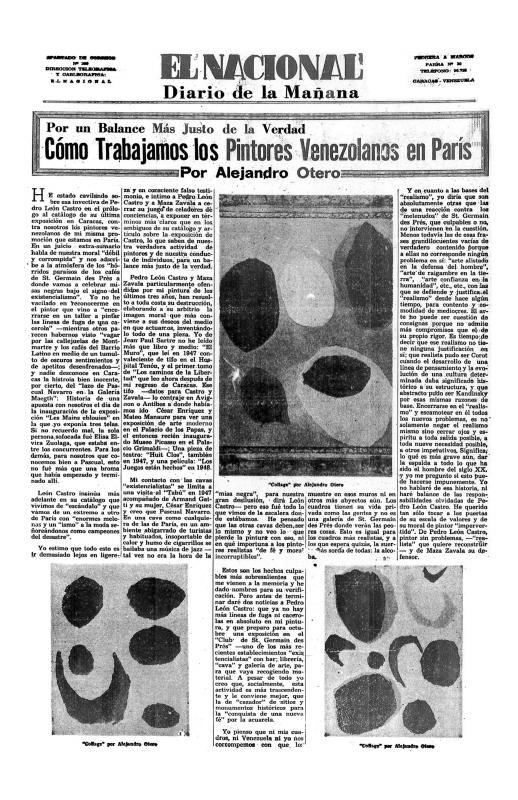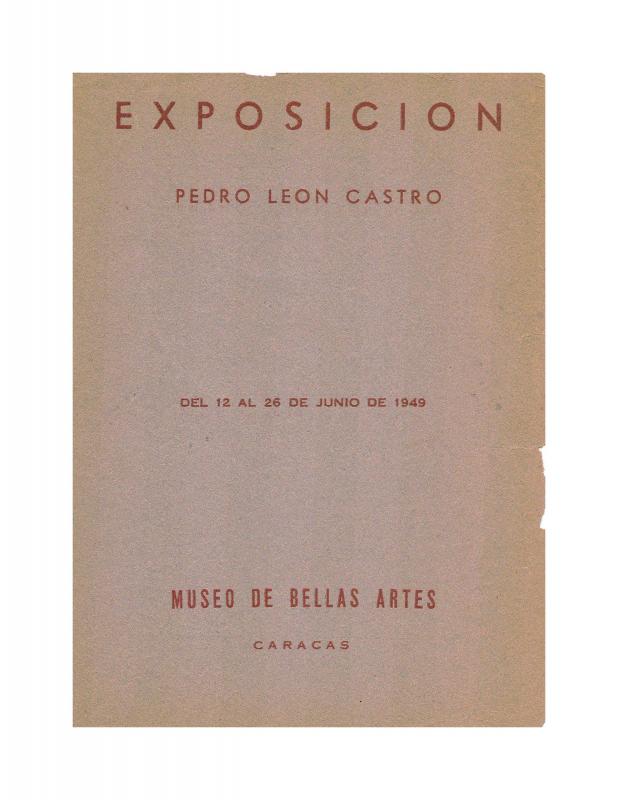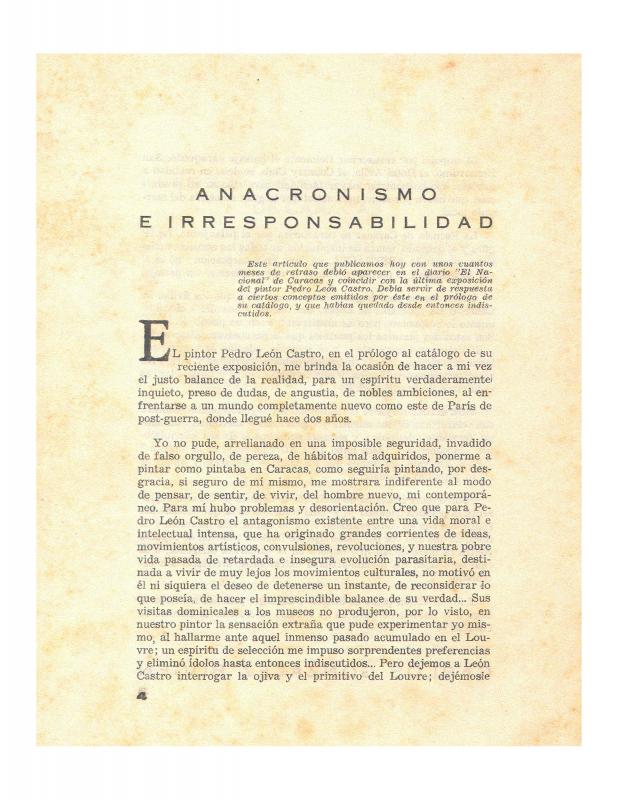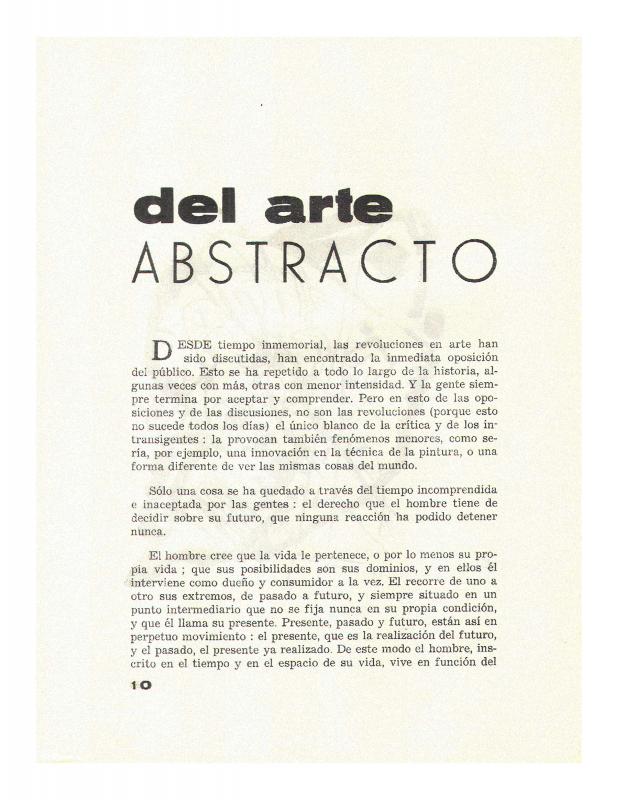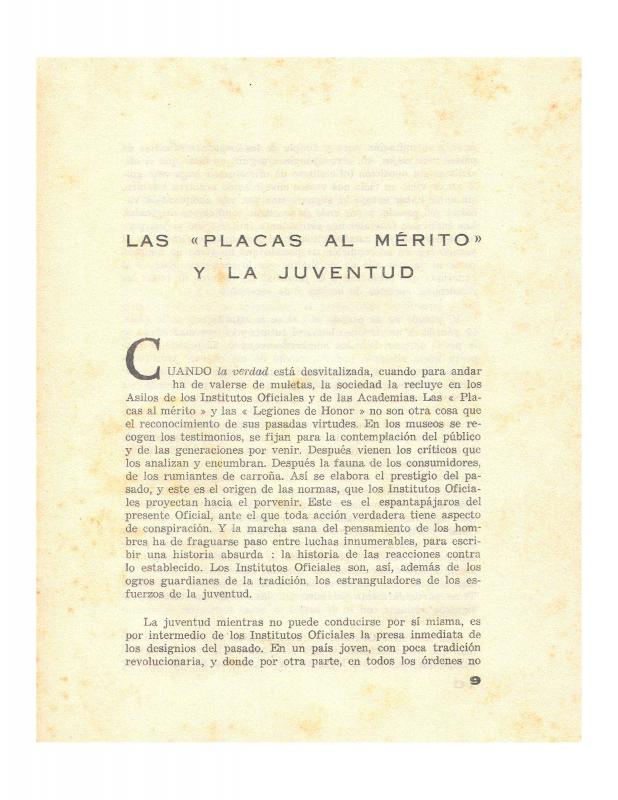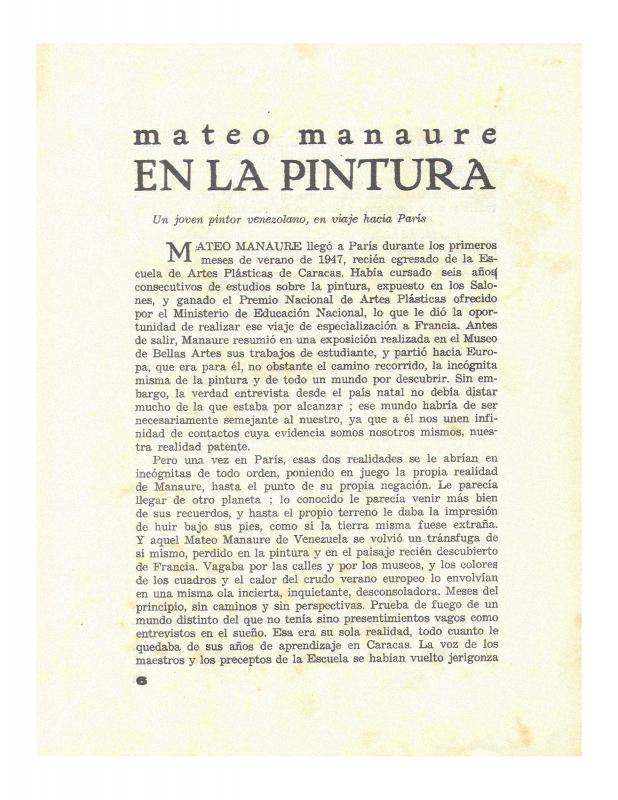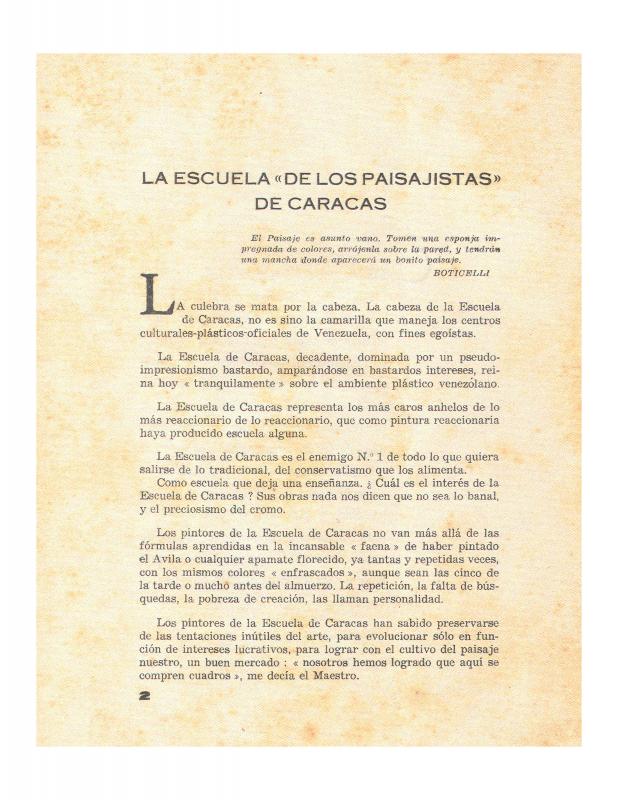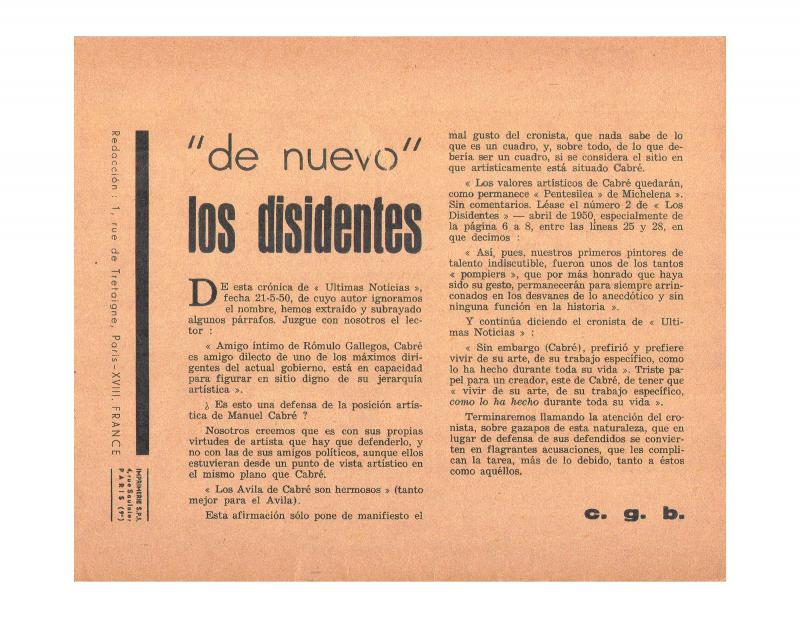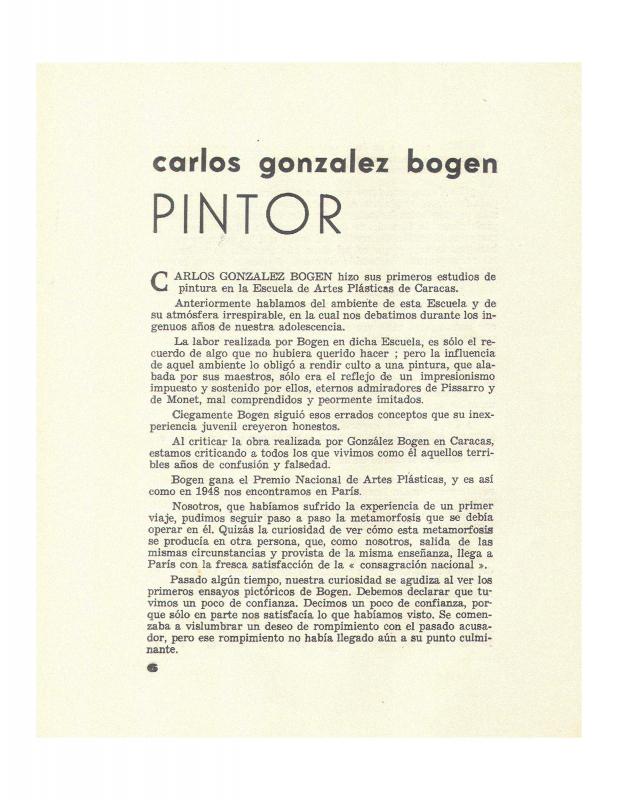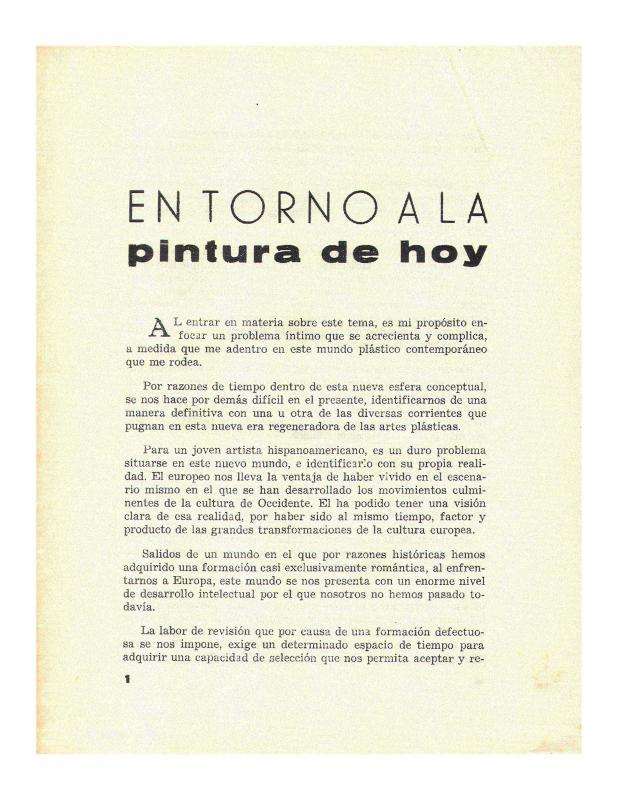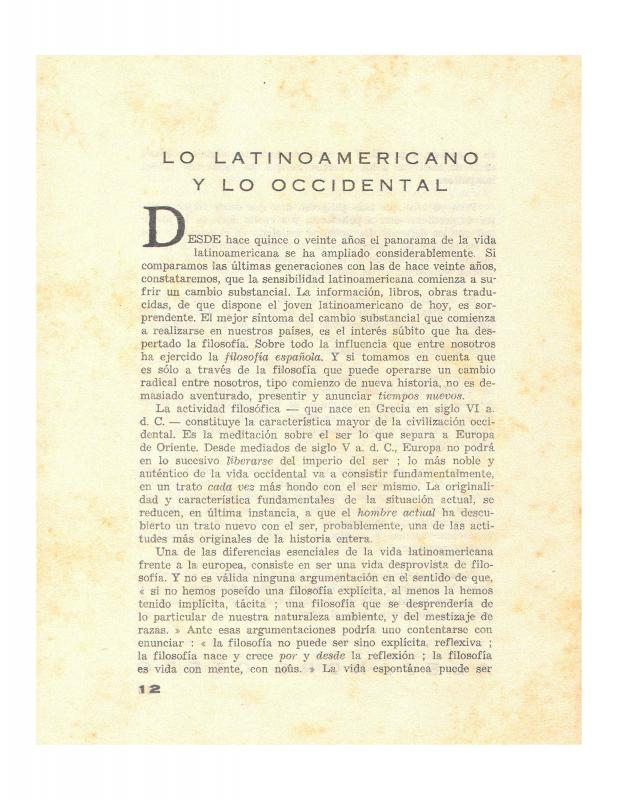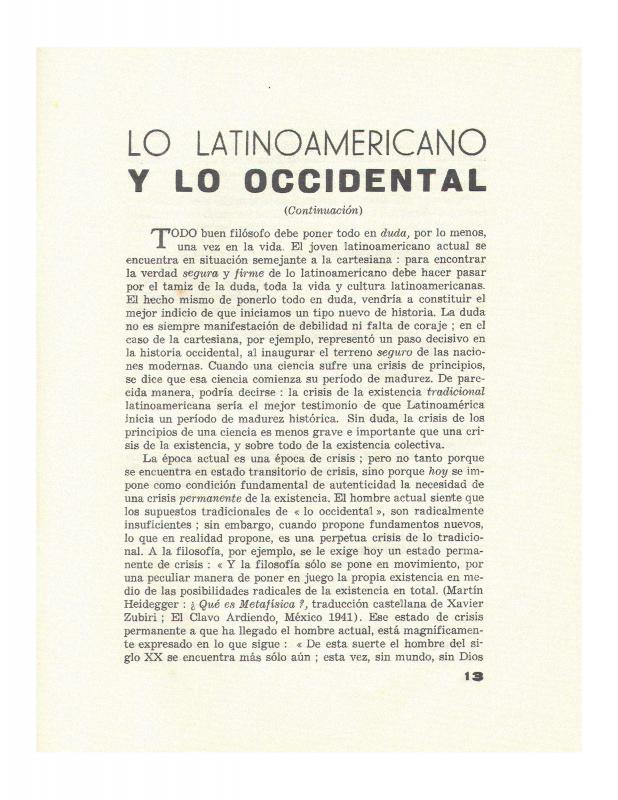The article by Alejandro Otero (1921–90) “Cómo trabajamos los pintores venezolanos en París” (El Nacional, July 17, 1949) [see ICAA digital archive (doc. no. 1102443)] mentions negative comments expressed in an earlier, untitled article by Pedro León Castro (1913–2003) that was published in the catalogue for Pedro León Castro (Caracas, 1949) (doc. no. 813765). León Castro refers to the debate that erupted in the wake of the exhibition of the series Las Cafeteras by Alejandro Otero at the Museo de Bellas Artes de Caracas (January 1949). Although several intellectuals and artists such as Guillermo Meneses, César Rengifo, Domingo Maza Zabala, and J. R. Guillent Pérez joined in the debate, this article focuses on four interconnected texts (three of them were replies to earlier texts). The first is a brief untitled text by León Castro (a “prologue” to the reviewers) that was published in the catalogue for his exhibition at the Museo de Bellas Artes (June 1949); the second is by Otero entitled “Cómo trabajamos los pintores venezolanos en París” (El Nacional, July 17, 1949); the third is this article (published in El Nacional, July 31, 1949); and the fourth is by Pascual Navarro, “Anacronismo e irresponsabilidad,” published in Los Disidentes magazine in 1950 (doc. no. 813751).
It is interesting to note that León Castro was railing against young abstract artists a year before Los Disidentes group was founded in Paris, and that his indignation and condemnation contributed to the birth of the group. Whereas in his first article, León Castro merely alluded to Otero, in this one he addresses the young painter as “Mr. Otero” to contradict him and discredit him. In both essays, it is evident that the early response to abstraction in Venezuela was more moral and uncomprehending than of theoretical nature; it also looked like a clash between generations. León Castro reinforces his moralistic message to young artists with political discourse; he considers it a betrayal to mankind to shut oneself up in ivory towers to create forms of great purity while turning one’s back on problems that cause thousands of deaths.
Reprinted in Roldán Esteva-Grillet, Fuentes documentales y críticas de las artes plásticas venezolanas: siglo XIX y XX, Volume I (Caracas: Universidad Central de Venezuela, 2001).
Los Disidentes was a group started in Paris in 1950 by a number of Venezuelan artists and writers who lived there from 1945 to 1952. From their home base in Paris they decided to challenge the official education provided by the Escuela de Artes Plásticas de Caracas, which was based specifically on landscape painting and nativist art. In the spirit of their name, Los Disidentes sought to breathe new life into traditional and academic art through an assimilation of the values espoused by European abstraction. Members included the painter Alejandro Otero [see “Del arte abstracto” (doc. no. 813611), “Las ‘placas al mérito’ y la juventud” (doc. no. 813429), and “Mateo Manaure en la pintura: un joven pintor venezolano, en viaje hacia París” (doc. no. 813639)]; Pascual Navarro, Luis Guevara Moreno, Carlos González Bogen [“La escuela ‘de los paisajistas’ de Caracas” (doc. no. 813695) and “‘De nuevo’ Los Disidentes” (doc. no. 813667)], Mateo Manaure [“Carlos González Bogen: pintor” (doc. no. 813583)]; Narciso Debourg [“En torno a la pintura de hoy” (doc. no. 813597)]; Perán Erminy, Rubén Núñez, Dora Hersen, Aimée Battistini, and J. R. Guillent Pérez, who was a philosophy student at the time [“Lo latinoamericano y lo occidental [Parte I]” (doc. no. 813723), and “Lo latinoamericano y lo occidental (Continuación)” (doc. no. 813478)]. They were later joined by other Venezuelan artists such as Armando Barrios, Miguel Arroyo, Oswaldo Vigas, Omar Carreño, Alirio Oramas, and Régulo Pérez. They published a magazine named after the group, Los Disidentes, which carried all their news, and appeared a total of five times.

